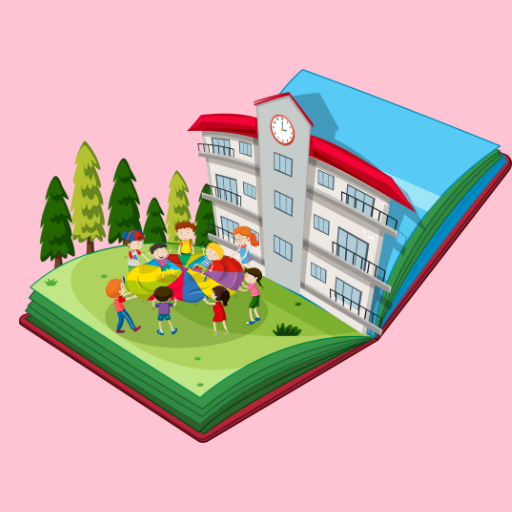Using pictures to teach English is a brilliant way to integrate visual tools in an ESL classroom and engage your students in the learning process. We understand that it can be a bit daunting for you, particularly in the planning stage, but its outcomes are sweeping and far-fetched.
Why?
Because it encourages both visual and non-visual students to participate actively in the learning session.

So, whether you decide to display images using a laptop, printouts, or even ask your ESL students to draw something themselves, photos can offer you a myriad of opportunities for memorable and effective ESL activities.
Therefore, in this article, we will be sharing with you four ESL activities with pictures that aren’t only great for learning but are also fun!
Why Teach English with Picture or Visual Cues?
Here are some reasons why teaching ESL with pictures or visual cues can help you achieve better results:
- Any form of visual cue can provoke imagination.
- They speak a universal language that knows no bounds.
- Visual cues or images can make tough topics easier to understand and more accessible.
- They are an extremely fun and easy way to convey meanings instantly.
- Pictures are an excellent way to incite discussions as everyone has a different interpretation of an image.
- Using pictures to teach English can aid a plethora of ESL exercises such as brainstorming exercises, storytelling, grammar exercises, vocabulary exercises, cultural lessons, role-playing, dialogue writing, etc.
4 ESL Activities with Pictures That Are Fun!
Many ESL teachers and learners don’t realize this, but apart from learning a language new language, a huge aspect of ESL classrooms is to have fun. So, if your student made a slip-up, do not fuss up. Instead, laugh it off and tell them to continue chattering away! After all, a classroom is a perfect place to err and learn.
Below we have a list of four picture-oriented ESL activities that aren’t only fun but will also help your students learn better and faster!
ESL Activity #1: Write Your Dialogues/Captions
For this ESL activity, you can use a collection of old pictures or source any pictures from the internet, magazines, or newspaper. Next, ask your ESL students to write dialogues or captions for the images. This exercise works great for all levels of learners. Moreover, you can divide the class into groups, split them into pairs of two or three, and instruct them to collaborate for the activity.
With this activity, your students can learn the fundamental principles of dialogue/caption writing and even practice their skills for assigned images. The activity allows and encourages the learners to be creative and test their English skills.
Once all the students are done, ask them to read their work aloud in front of the entire class while also displaying the picture to them. After they are done, acknowledge their work and provide suggestions for improvement if there are any.
ESL Activity #2: What’s Happening in The Picture?
This next activity for teaching ESL through visual cues and photographs will encourage the learners to talk and explain the image. Unlike the first activity that emphasizes only the dialogues in the picture, this exercise prompts ESL students to explain what’s happening in the given image a great deal.
Although, you must remember one thing – use pictures that have an extensive background and foreground. This will help learners to get a ton of opportunities to practice their English language skills by using nouns, verbs, adjectives, etc., where applicable.
In addition to this, you can conduct this activity in two ways: after sharing an image, ask the students to either explain it in writing or talk about it. You can easily kill two birds with one stone using this exercise to test the students’ speaking and writing skills.
ESL Activity #3: True or False?
In this ESL exercise, you may require a projector and a whiteboard, but if these aren’t available, you can simply use printouts. The ultimate goal is to ensure every student in the class has viewed the picture you’ll be using for the activity. Once that’s out of the way, it is time to start.
First, show the image to everyone in the class and then hide it. Next, read out statements related to the image and instruct the students to guess if it is true or false. Or, instead of playing a ‘True & False’ game, you can ask the students to write about the image and review their work in groups.
ESL Activity #4: The Dictation Game
This is one of the activities on this list that demands greater participation from you as a teacher. Additionally, this exercise puts great emphasis on the learners listening and comprehension skills.
For this activity, the first thing you must get out of the way is to choose a picture, for example, a map or any other illustration with few colors and limited objects (for starters). Once you have done that, try explaining the picture to the entire class.
Tell your ESL students to carefully listen to the dictation and draw an illustration according to the information provided to them. You can even take this activity a level up by using images that are a bit more complicated and entail more objects. However, do consider your class’s comprehension and drawing skills before you do that.
Benefits of ESL Picture Activities
Picture activities are a powerful tool for teaching English as a Second Language (ESL). They offer a visual method of teaching, which can aid understanding and retention, particularly for visual learners. Here are some of the main benefits of using picture activities in your ESL class and a few examples of how to use them effectively:
- Vocabulary Building: Pictures can be used to introduce and practice new vocabulary. For example, you could show a picture and ask students to identify objects, people, or actions in the picture. This helps students associate words with images, reinforcing their understanding and memory of new vocabulary.
- Storytelling and Writing: Pictures can serve as prompts for storytelling or writing exercises. For instance, you could show a picture and ask students to create a story based on what they see. This can help stimulate creativity and improve students’ writing and narrative skills.
- Speaking and Discussion: Pictures can be used to spark discussion and debate. Show students a picture and ask them to describe it, share their opinion about it, or discuss what’s happening in the picture. This can be a great way to encourage students to use new vocabulary and structures in conversation.
- Grammar Practice: Pictures can be used to illustrate and practice various grammatical structures. For example, a series of pictures can be used to practice tenses by asking students to describe what happened, what is happening, or what will happen.
- Cultural Understanding: Pictures from different cultures can be used to foster cross-cultural understanding. They can provoke discussion about cultural differences and similarities, customs, traditions, and lifestyles.
- Inference and Prediction: Pictures can be used to develop students’ inference and prediction skills. Students can be asked to infer what might have happened before the picture was taken or predict what might happen next.
Here are a few examples of picture-based ESL activities:
Picture Dictation: This involves one student describing a picture in detail to another student who cannot see it, and who must draw it based solely on the description. This activity promotes listening and communication skills.
Picture Bingo: Create bingo cards with pictures instead of numbers. The teacher describes a picture, and if the students have that picture on their card, they cover it. The first student to cover all pictures wins.
Picture Sequence: Provide a series of pictures that tell a story, but give them to the students out of order. The students have to put them in the correct order and then describe the story.
Spot the Difference: Give students two similar pictures with slight differences and have them work in pairs or groups to identify the differences.
Using pictures in ESL teaching can make lessons more engaging and fun, and it can also help cater to different learning styles in your classroom.
Level Up Your ESL Teaching Skills!
With Digiteachers – a free multipurpose education site – you can level up your teaching skills by a myriad of educational content. From learning how to teach English online, teaching, and living abroad to receive the best advice on becoming a better educator.
So, whether you are using ESL activities with pictures in the classroom or teaching any other topic related to the English language, please browse the rest of our blog section for more useful tips and tricks for whatever’s in store for your next language session!

